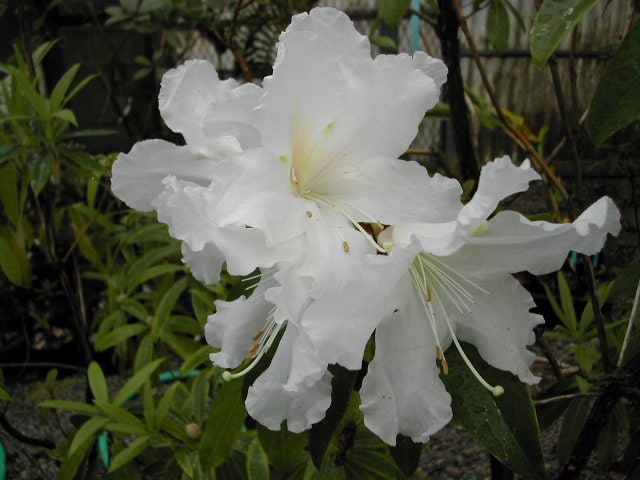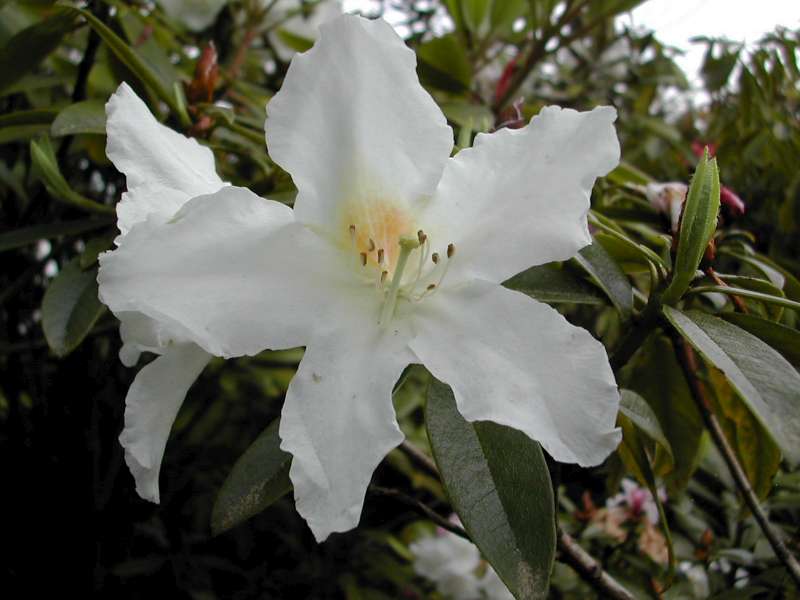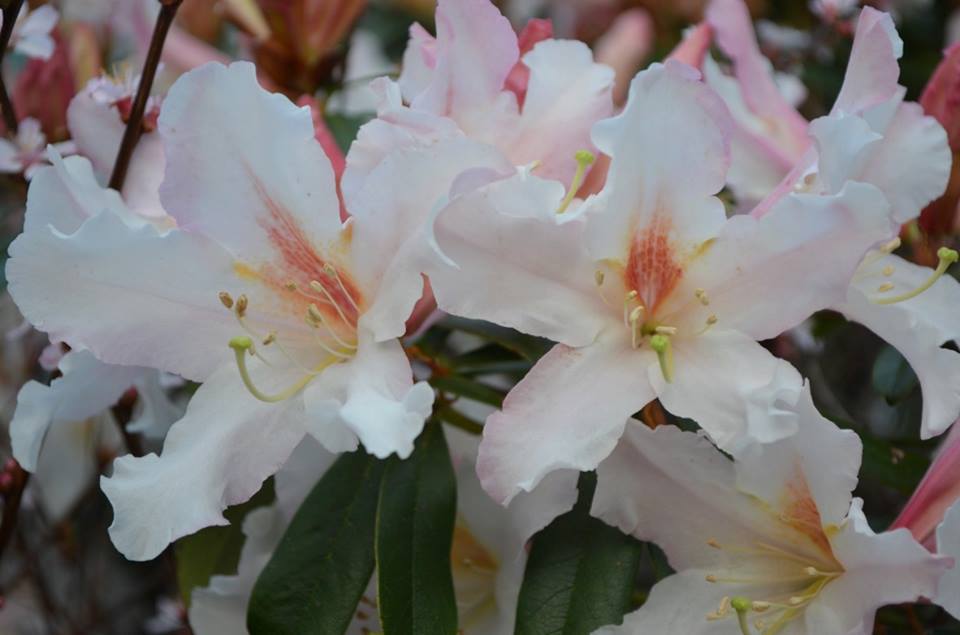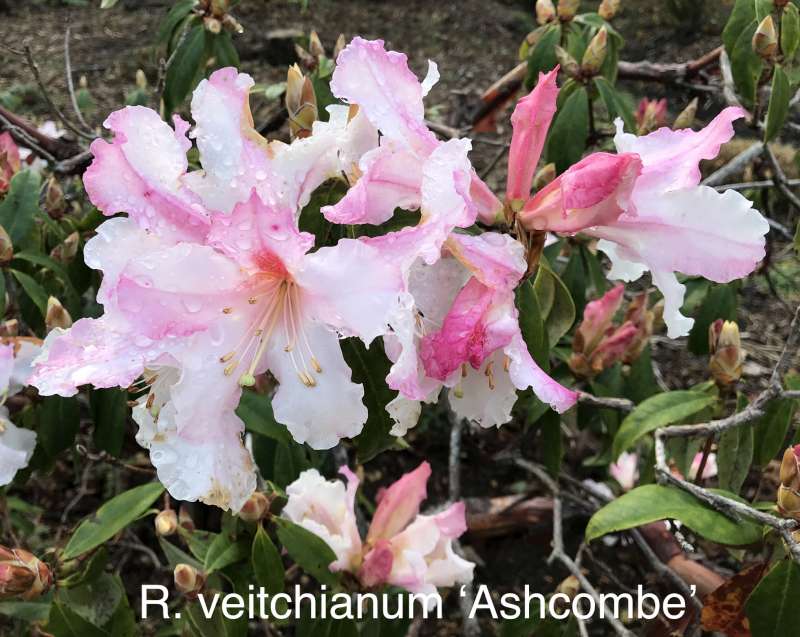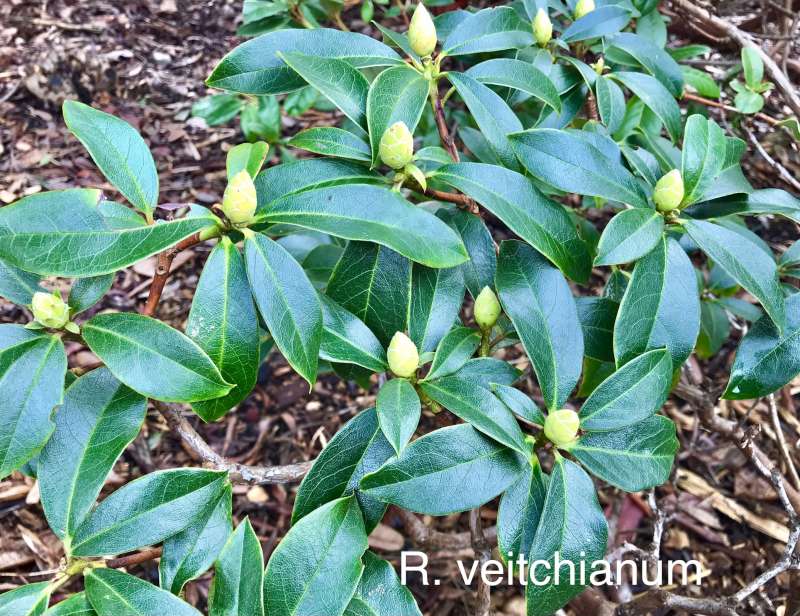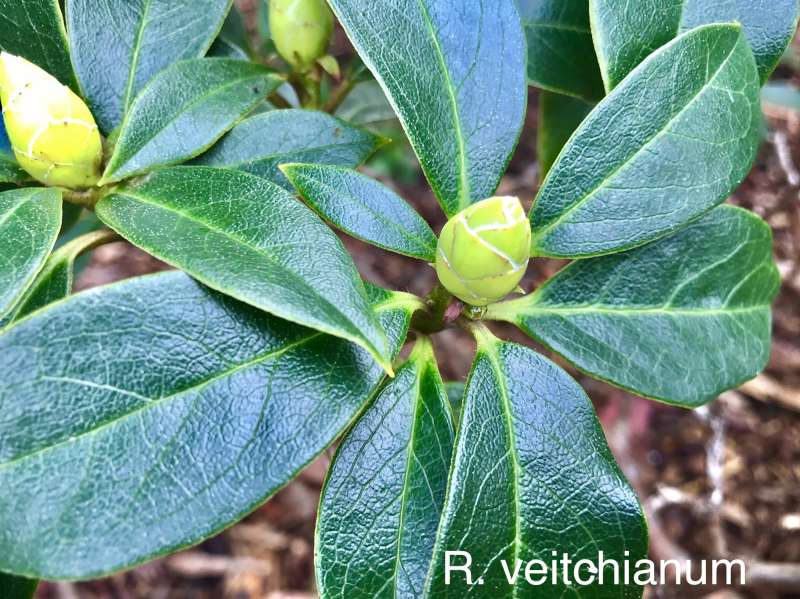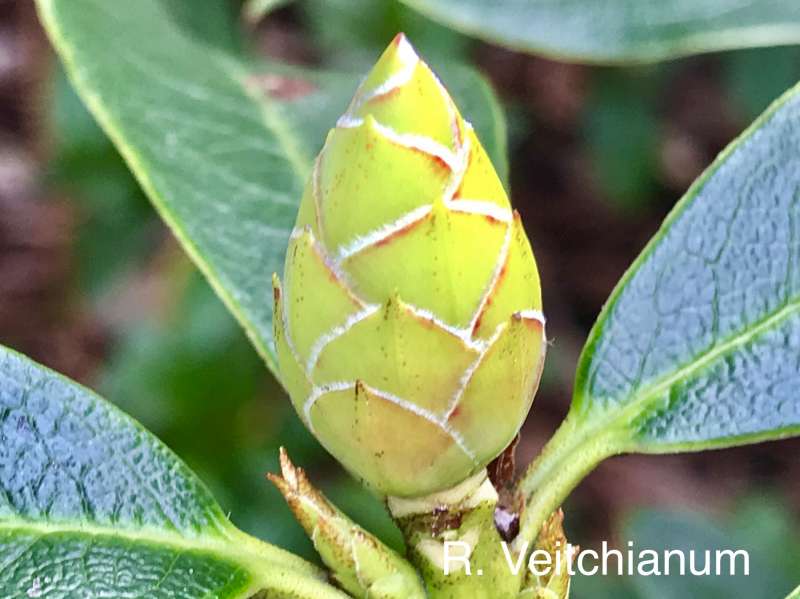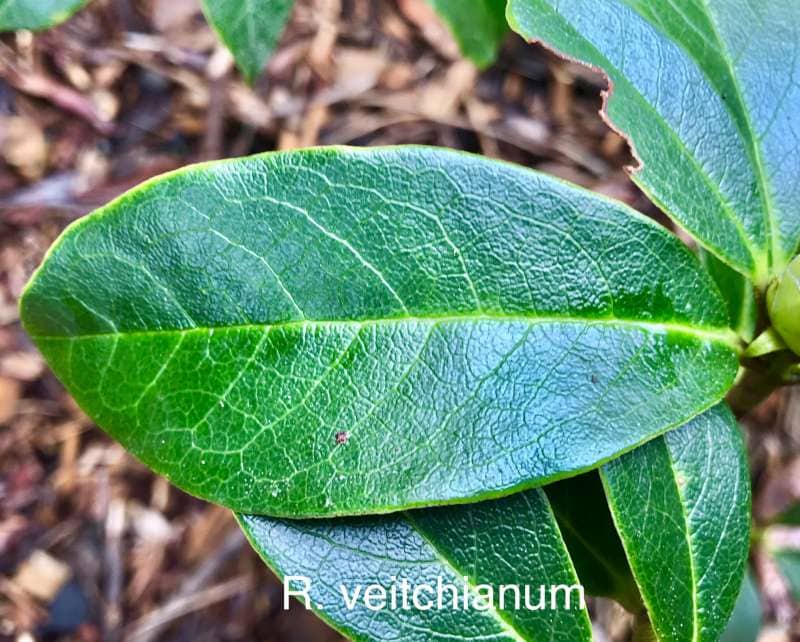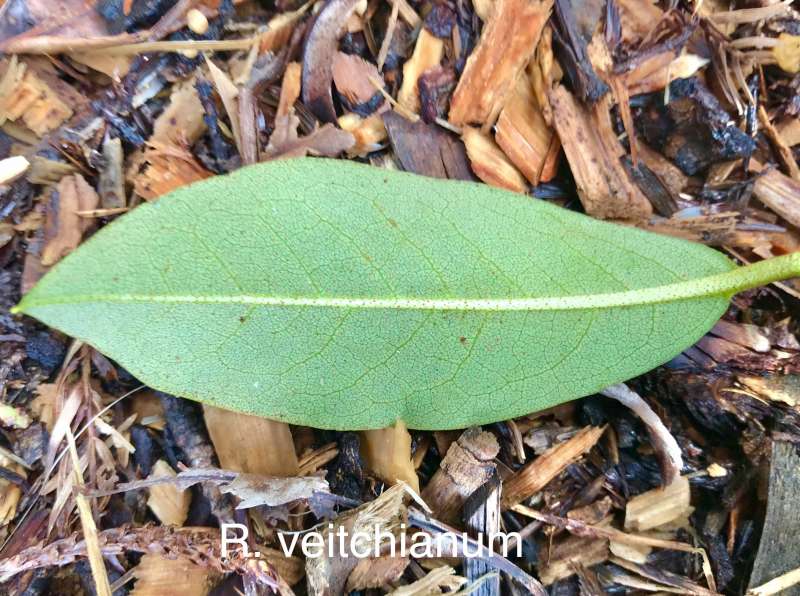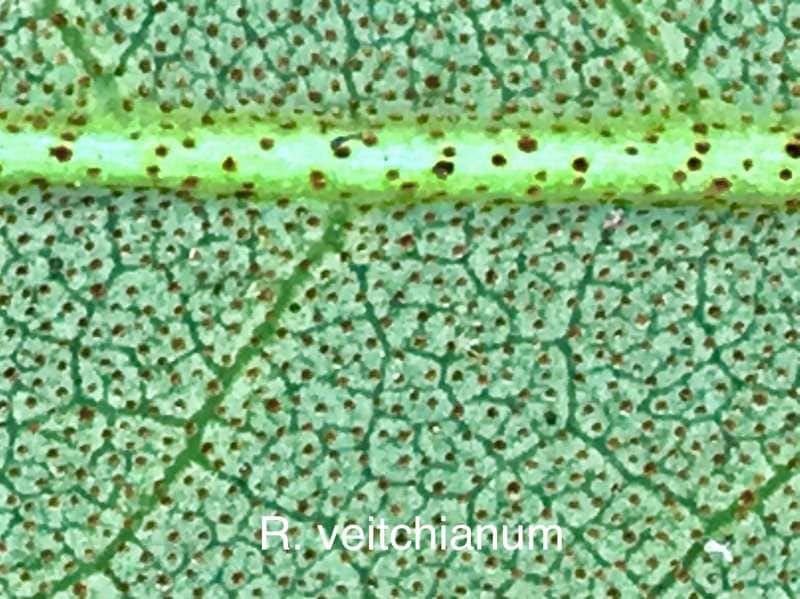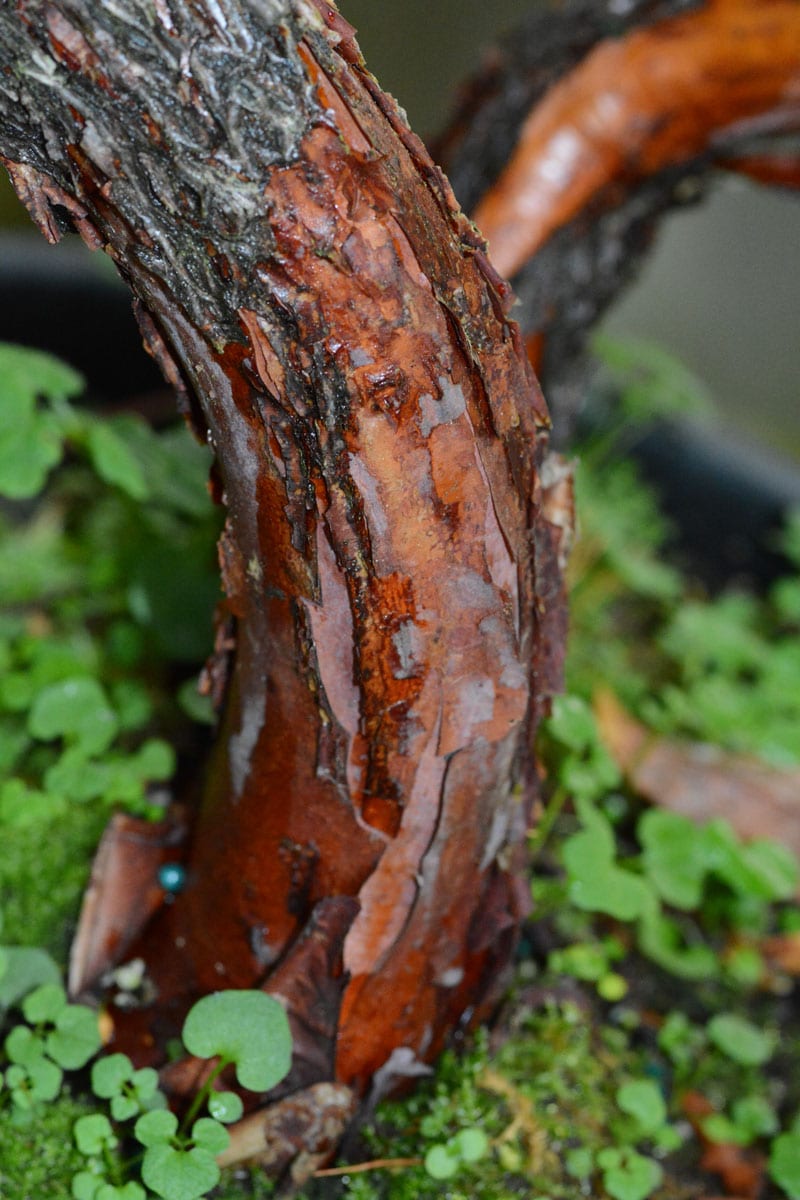Rhododendron veitchianum
Billeder af Rhododendron veitchianum
Beskrivelse
R. veitchianum (Maddenia). Stor og kraftig, men ofte en kompakt voksende busk med glat og skinnende rødligbrun bark. De store duftende blomster er hvide, ofte med en gul ganeplet og med en bølget rand. Helt variable i blomstringstidspunktet og kræver god dræning. Vildtvoksende i S-Burma, Laos, Thailand og Vietnam, fra 1200 til 2400 m, som en epiphyt på sten og klipper eller i tørre stedsegrønne skove.
Hans Eiberg
ARS
Ikke i Flora of China
RBGE Herbarium; R. veitchianum
RBGE Herbarium; cubittii
Trees and Shrubs Online; R. veitchianum Hook.
Epiphytic or free-growing shrub, to 2 m; young shoots sparsely setose. Leaves 6.5–10 × 2.8–4 cm, obovate or narrowly elliptic, apex shortly acuminate, margin ciliate, at least when young, upper surface with impressed midrib, lower surface pale, with distant unequal golden scales. Flowers (l-)2–5, in a loose inflorescence, not scented; calyx disc-like, ciliate; corolla white, often with a yellow blotch, openly funnel-campanulate, 50–60(–65) mm; outer surface scaly only on adaxial (inner) side, pubescent at base, lobes usually crisped; stamens 10; ovary scaly, tapering into the style which is scaly well above the base. Flowering May-June. Royal Horticultural Society (1997).
Distribution Myanmar Laos Thailand Vietnam
Habitat 1,200–2,400 m
RHS Hardiness Rating H3
Awards AM 1935 (Lt Col E.H.W. Bolitho, Penzance) to R. cubittii hort.; flowers white deeply flushed rose. AM 1978 (G.Gorer, Sunte House, Haywards Heath) to a clone ‘Margaret Mead’; truss 2-3-flowered, corolla white with faint orange flush in upper throat. FCC 1962 (Crown Estate Commissioners, Windsor), as R. cubittii hort. ‘Ashcombe’; flowers white with an orange-yellow blotch. AGM 1993 to R. veitchianum AGM 1993 to R. cubittii hort.
Conservation status Least concern (LC)
Taxonomic note R. cubittii, as known in cultivation, does not match the type specimen and is of uncertain provenance. It is therefore not formally recognized here. The name technically applies to a plant that is clearly referrable to R. veitchianum. Royal Horticultural Society (1997)
An evergreen shrub up to 12 ft or so high in the wild, often epiphytic; young branchlets scaly, without bristles. Leaves leathery, narrowly obovate or elliptic-obovate, obtuse and acuminate at the apex, narrowed to the base, 2 to 4 in. long, 3⁄8 to 13⁄4 in. wide, scaly above when young, permanently scaly beneath, the scales spaced about their own diameter apart or slightly more widely; petiole up to 1⁄2 in. long.
Flowers in terminal trusses of up to five, on scaly stalks about 3⁄8 in. long. Calyx very short, often with a few slender hairs on the margin, scaly near the base. Corolla five-lobed, widely funnel-shaped, 21⁄2 to 3 in. long, more in width, white, slightly tinged with green outside, the lobes (in the type) with crinkled margins, scaly on the outside, mostly on the upper (adaxial) side of the tube, which is also slightly downy on the outside near the base. Stamens ten, downy towards the base. Ovary scaly; style scaly near the base. Bot. Mag., t. 4992. (s. Maddenii ss. Ciliicalyx)
Native to lower and central Burma, Thailand and Laos
Native of the mountains of lower and central Burma, Thailand, and Laos; introduced by Thomas Lobb for Messrs Veitch from the mountains east of Moulmein and first exhibited by them in May 1857. In the plant shown the corolla-lobes were strongly crinkled, but this is probably not a characteristic of the species as a whole. Seeds from self-pollinated flowers produce many plants with smooth-edged lobes, which used to be known in gardens as var. laevigatum. Some plants are intermediate, with undulated lobes.
R. veitchianum is too tender to be grown outdoors even in the mildest parts of the country. It is mentioned here only because it is one of the oldest members of the Ciliicalyx subseries, in which other, closely allied and somewhat hardier species will probably be included when the group is revised. Its flowering time under glass is late spring and early summer.

